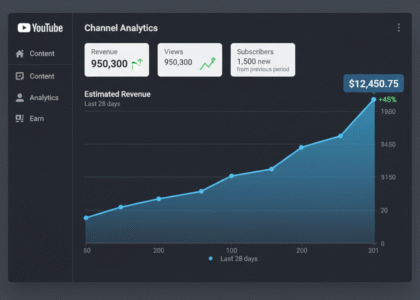Introduction: Disability insurance importance
Imagine losing your ability to work due to an illness or injury. How would you cover your daily expenses, mortgage payments, or medical bills? This is where disability insurance importance comes into play. Many people overlook disability insurance, assuming that accidents or health issues won’t affect them. However, statistics show that one in four workers will experience a disabling event before retirement. Ensuring financial security during unexpected life events is a critical component of personal finance.
In this blog, we’ll explore why disability insurance is essential, how it works, and practical steps to secure your income effectively.
What is Disability Insurance?

Disability insurance provides financial protection by replacing a portion of your income if you become unable to work due to an illness or injury. There are two main types:
- Short-Term Disability Insurance (STD) – Covers lost wages for a few months (typically up to 6 months).
- Long-Term Disability Insurance (LTD) – Provides coverage for an extended period, sometimes until retirement.
By investing in the right policy, you can prevent financial distress and maintain your lifestyle even if you cannot work.
Why is Disability Insurance Important?
1. Protecting Your Income and Lifestyle
Your income is your greatest asset. Without it, covering essentials like housing, utilities, and groceries becomes challenging. Disability insurance ensures that your bills get paid, even when you’re not earning a paycheck.
2. Unexpected Disabilities Are More Common Than You Think

Many people believe that disabilities result only from accidents, but illnesses like cancer, heart disease, or mental health disorders often lead to long-term work absences. According to the Social Security Administration (SSA), a 20-year-old worker has a 25% chance of becoming disabled before reaching retirement age.
3. Employer-Sponsored Plans May Not Be Enough
While some employers offer disability insurance, these policies often have limitations, such as:
- Limited coverage percentages (usually 50-60% of your salary).
- No portability—coverage ends if you leave your job.
- Taxable benefits if the employer pays the premiums.
4. Medical Expenses Can Skyrocket

A disability often comes with additional healthcare costs, therapy, or long-term treatment. Without a steady income, managing these expenses becomes stressful. A disability insurance policy helps cover these costs without draining your savings.
How to Choose the Right Disability Insurance Policy
When selecting disability insurance, consider these factors:
- Coverage Amount: Choose a policy that replaces at least 60-70% of your income.
- Waiting Period: The time before benefits start (shorter periods mean higher premiums but faster payouts).
- Benefit Period: How long benefits last—opt for a policy that covers you until retirement if possible.
- Policy Type: Own-occupation vs. any-occupation coverage (own-occupation is preferable as it covers your specific profession).
- Exclusions and Riders: Look for additional benefits like cost-of-living adjustments (COLA) and residual disability riders.
Common Myths About Disability Insurance
“I’m young and healthy; I don’t need it.”
Many disabilities stem from illnesses rather than accidents. Young professionals are not immune to unexpected health issues.
“Workers’ compensation will cover me.”
Workers’ comp only covers work-related injuries, leaving most disabilities uncovered.
“Social Security Disability Insurance (SSDI) will help.”
SSDI has strict eligibility criteria, long approval times, and low benefit amounts, making it unreliable for immediate financial needs.
Steps to Secure Your Income with Disability Insurance
- Assess Your Current Coverage: Check if your employer provides disability insurance and evaluate its sufficiency.
- Compare Policies from Private Insurers: Independent policies offer better coverage and follow you even if you change jobs.
- Calculate How Much Coverage You Need: Factor in your monthly expenses, debts, and future financial goals.
- Read the Fine Print: Understand exclusions, benefit limitations, and premium costs before signing up.
- Apply While You’re Healthy: Premiums are lower when you’re young and in good health.
FAQs About Disability Insurance
1. How much does disability insurance cost? The cost varies, but it typically ranges between 1-3% of your annual income.
2. Can freelancers or self-employed individuals get disability insurance? Yes, self-employed professionals can buy private disability insurance tailored to their income needs.
3. What happens if I never use my disability insurance? Like any insurance, you’re paying for protection. Some policies offer return-of-premium riders, which refund a portion of unused premiums.
4. Is disability insurance tax-deductible? If you pay for the policy with after-tax dollars, your benefits are tax-free. Employer-sponsored plans often result in taxable benefits.
Conclusion
The importance of disability insurance cannot be overstated. It safeguards your income, protects your lifestyle, and ensures financial stability during challenging times. Whether you’re a young professional, a freelancer, or nearing retirement, investing in a solid disability insurance plan is a crucial step toward financial security.
Don’t wait for the unexpected—secure your income today. Explore more expert financial tips at GetCashVibe and take control of your financial future!






